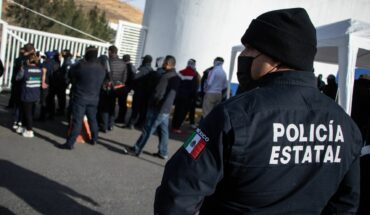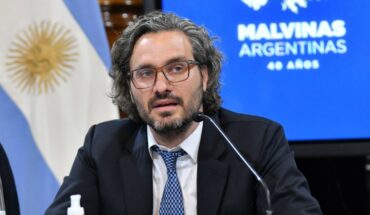Héctor Salomón Galindo Alvarado, legal advisor of the company DNV and who is pointed out by the head of government, Claudia Sheinbaum, as the cause of the conflict of interest attributed to the Norwegian firm, works in that company since July 2021, that is, since two months before DNV delivered the second opinion on the collapse of Line 12 of the Metro, which was accepted by the authorities without reservation.
“(There is) a conflict of interest that we detected at the moment when the third report begins to be developed because, among other things, a lawyer appears who has litigated against President Andrés Manuel López Obrador,” Sheinbaum said this week.
According to what the head of government has pointed out, Galindo Alvarado litigated in 2012 against today’s President López Obrador, whom he accused of that, while he was the national leader of Morena – which had not yet been constituted as a political party and was a civil association – he made use of public resources for the promotion of his movement.
In the end, the complaint was dismissed. However, this situation has been reason for Sheinbaum to point out that his hiring constitutes a conflict of interest, so the government cannot accept the third report that the firm delivered on the root cause of the collapse of a section of the elevated viaduct of the “Gold Line” on May 3, 2021.
According to Galindo Alvarado’s public LinkedIn profile, he had already worked at DNV between October 2016 and September 2017, when he served as a contract advisor in Mexico.
Sheinbaum also argued that Galindo Alvarado’s conflict of interest is set up because the lawyer served as director of legal analysis in the executive secretariat of the National Anti-Corruption System while Enrique Peña Nieto was president.
For Sheinbaum, the conflict of interest is clear, although he qualified by pointing out that it will be the Comptroller of the capital that establishes it.
Read: “Error” of methodology and maintenance review, the reasons why the CDMX does not recognize DNV report by L-12
Delays
On May 12, 2021, days after the collapse, the Secretariat of Integral Risk Management and Civil Protection (SGIRPC) signed with DNV the contract SGIRPC/DEAF/RMAS/CT/004/2021, to carry out an opinion on the root cause of the collapse of a part of the elevated viaduct of Line 12 of the Metro, which claimed the lives of 26 people and left 104 injured.
According to the document, of which Political Animal has a copy, the agency headed by Myriam Urzúa would pay 26 million 232 thousand pesos for the complete study.
In Annex 1 of the contract, it is specified that three deliveries would be made and, although no precise dates are contemplated to make them known, on June 16, when the preliminary opinion was delivered in which it was reported that the collapse of the section was due to a structural failure associated with several deficiencies in the construction process, it was reported that the second delivery would be made on July 14, and the third, in which the root cause of the accident would be announced, would be public on August 30.
However, none of these dates were met. According to the head of government, the company requested extensions to deliver the second and third reports, as it needed more time to carry out its investigations.
It was not until 7 September that the second report was published. In that volume, it was determined that the collapse occurred as a result of the buckling of two beams due to the lack of bolts.
The term of the contract ended on December 31 and this Wednesday the SGIRPC confirmed that it received the third report only on February 28.
According to the ninth clause of the contract, each of the reports that the company would deliver would be verified by the agency through the General Directorate of Risks.
“In the event that the General Directorate of Risk Analysis detects and determines the existence of any irregularity or deficiency on the part of the ‘service provider’, regarding the service and / or compliance with the obligations contracted in this instrument, said irregularity will be notified in writing in order to proceed to repair them and / or comply with the provisions of this contract”, says the contract.
“The exercise of this right does not release the ‘service provider’ from the responsibility of supervising by itself the execution of the service, consequently, the obligation to respond for the poorly executed service, subsists at all times for ‘the service provider'”.
After not accepting the third report, the head of government confirmed that the termination of the contract has begun, so there is a civil process underway. If necessary, he said, it will be transited through the criminal road.
Read: CDMX government received final report on Line 12; decides not to publish it
Methodological and maintenance problems?
In addition to the alleged conflict of interest that is configured, the third report delivered by DNV lacks the use of the agreed methodology, which resulted in a deficient report and, according to the Secretary of Mobility, Andrés Lajous, allowed the possibility of an omission by the current administration with the maintenance of the “Golden Line” to be “sown”.
“Out of nowhere, and it is a surprise in the face of the final opinion, it sows the issue of maintenance. However, the question is, and this is the question that has been posed, in the face of a design error or a construction problem, how the absence of bolts, what does maintenance have to do with?”, said the official this Thursday in a radio interview with Ciro Gómez Leyva for the Radio Fórmula station.
“How do you maintain a thing that no one is telling you is poorly designed? The design error is discovered once the collapse happens,” he added.
Since 2016, when Line 12 reopened after the elevated viaduct was rehabilitated, the “Gold Line” has been maintained by the French company TSO, which is contracted to maintain the operating conditions of the line’s fixed facilities.
Every day, when the service ended, workers of the company descended to the tracks and carried out the work 365 days a year.
On average, the company charges around 120 million pesos annually for work that includes the leveling of the track, the calibration of the track apparatus and any changes or anomalies that happen so that the train can circulate safely.
Although the capital authorities received the third root cause report from the DNV company on February 28, and although a civil process is being waged, the capital government has also reported that the report will not be released to the population.
Through a statement, the SGIRPC listed the technical and methodological deficiencies for which it does not accept the work of DNV; however, he did not explain in detail each of them.
For example, in technical terms, the agency noted, among other factors, that the paper does not have alternative hypotheses and the reasons for its discarding, as well as that there is an absence in the model of a more detailed analysis of distortion-induced fatigue.
Meanwhile, in methodological terms, the agency pointed out that the company did not make use of its own methodology called BSCAT, which is even a registered trademark and includes the use of software. Another of the shortcomings, according to the capital authorities, was that those responsible confused the causes established in their own technical opinion.
What we do at Animal Político requires professional journalists, teamwork, dialogue with readers and something very important: independence. You can help us keep going. Be part of the team.
Subscribe to Animal Político, receive benefits and support free journalism.#YoSoyAnimal





